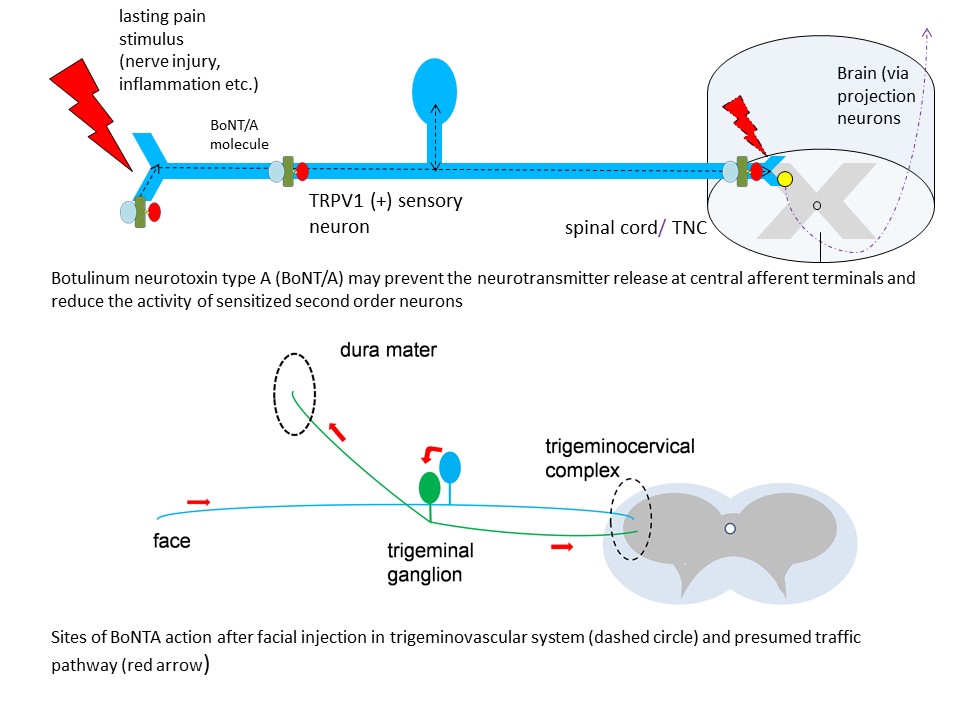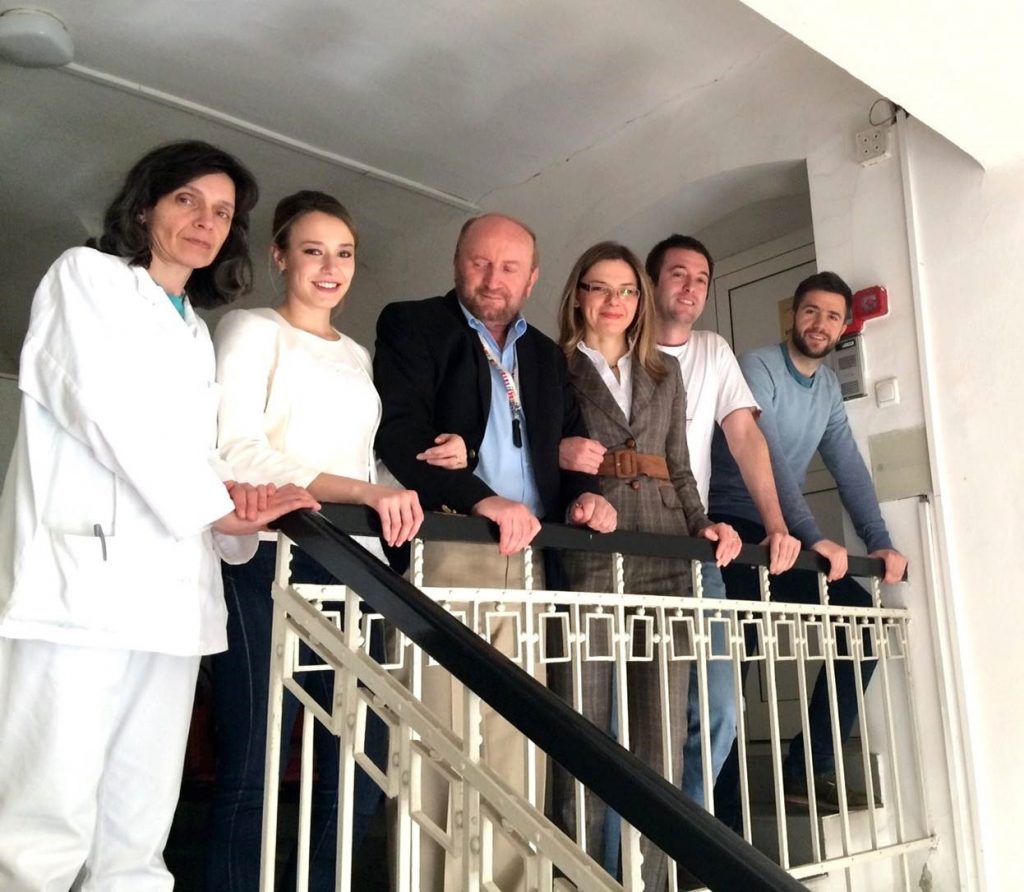Projekt HRZZ: BrainTox
Clostridial Neurotoxins and Brain
HRZZ Research Project (IP-2014-09-4503)
Project leader (PI): prof. Zdravko Lacković
Host institution: University of Zagreb School of Medicine, Zagreb, Croatia
Project duration: 24 months (20.10.2015. – 20.10.2017.)
Project funding: 500 000 HRK

Project team members

Laboratory of Molecular Neuropharmacology, Department of Pharmacology, University of Zagreb School of Medicine
Prof.dr.sc. Zdravko Lacković, M.D. (Department of Pharmacology, University of Zagreb School of Medicine, Zagreb, Croatia)
Project team:
Prof.dr.sc. Maja Relja, M.D. (Department of Neurology, Clinical Hospital Center, University of Zagreb School of Medicine, Zagreb, Croatia)
Prof.dr.sc. Lidija Bach-Rojecky, MPharm. (Department of Pharmacology, University of Zagreb School of Pharmacy and Biochemistry, Zagreb, Croatia)
Dr.sc. Ivica Matak, dipl.ing.biol. (Department of Pharmacology, University of Zagreb School of Medicine, Zagreb, Croatia)
Dr.sc. Boris Filipović, M.D. (Department of Pharmacology, University of Zagreb School of Medicine, Zagreb, Croatia)
Dr.sc. Višnja Drinovac-Vlah, MPharm. (Department of Pharmacology, University of Zagreb School of Pharmacy and Biochemistry, Zagreb, Croatia)
Dr.sc. Nataša Klepac, M.D. (Department of Neurology, Clinical Hospital Center, University of Zagreb School of Medicine, Zagreb, Croatia)
Technician:
Božica Hržan (Department of Pharmacology, University of Zagreb School of Medicine, Zagreb, Croatia)
Foreign collaborators:
Prof.dr.sc. Zsuzsanna Helyes, M.D. (Department of Pharmacology and Pharmacotherapy, Medical School, University of Pécs, Pécs, Hungary).
Prof.dr.sc. Claudia Sommer, M.D. (Department of Neurology, University of Wurzburg, Würzburg, Germany)
Dr.sc. Matteo Caleo, MSc (CNR Institute of Neuroscience, Pisa, Italy)
PROJECT SUMMARY & OBJECTIVES
Botulinum toxins (BTX) and tetanus toxin (TTX) are the most important clostridial neurotoxins and one of the most toxic substances in nature. One gram of BTX type A (BTX-A) could kill more than one million people via inhalational route. At the same time it is often used for therapeutic, especially cosmetic purposes (Botox).
Today, BTX-A use in certain types of pain is increasing. Long-term efficacy and safety are of a special clinical value. Until recently it was believed that the primary mechanism of BTX-A antinociceptive action is localized at peripheral nerve endings, mediated by prevention of neurotransmitters release, caused by cleavage of SNAP-25, protein required for exocytosys. Our laboratory revealed for the first time that BTX-A is retrogradely transported from periphery through sensory nerves to the CNS and that the site of its action on pain is central. However, the exact mechanism is yet unresolved. Thus, our project proposal consists of 7 mutually connected objectives:
- Our recently published data suggested that opioid and GABA-ergic systems are involved in BTX-A central antinociceptive activity, via an unknown mechanism. Therefore, we will investigate: BTX-A influence on the expression of opioid receptors and opioid peptides precursor molecules; possible involvement of glutamate receptors in central BTX-A antinociceptive action; potential role of spinal and supraspinal glia in antinociceptive action of BTX-A;
- We previously reported BTX-A antinociceptive effect on bilateral pain models. Our goals in the present project will be to investigate the mechanism of BTX-A action on bilateral pain and its possible interference with the central sensitization.
III. Our preliminary data also suggested that capsaicin-sensitive primary afferents are involved in central BTX-A antinociceptive activity. Therefore, we will further investigate association of capsaicin-sensitive neurons and BTX-A antinociceptive activity.
- We recently discovered that different types of trigeminal experimental pain are accompanied by neurogenic inflammation of dura mater – the presumed primary mechanism of migraine headache. Herein we will investigate possible effect of BTX-A on trigeminovascular system and calcitonin gene-related peptide, as a possible mechanism of its antimigraine action.
- In addition to sensory system, the central effects of BTX-A in motor system will be investigated too, which might lead to the better understanding of its beneficial effects on movement disorders.
- Additionally, another clostridial toxin will be explored: the TTX. Although it has clinically opposite effects (spastic vs. flaccid paralysis), its molecular effects at the level of synapses are very similar to BTX. We assume that the selective delivery of small amounts of TTX into sensory nerves and ganglia could also have the effect on pain.
VII. In parallel, the effect of BTX-A on various non-motor functions in migraine or dystonic patients will be studied. This makes our research also a translational research.
Proposed research project could lead to the explanation of BTX-A mechanisms of action in chronic pain, migraine, and hyperkinetic movement disorders, which would make an important contribution to possible refinement of its clinical use. As a problem-oriented research, it requires various procedures and techniques (animal behavior, Western blot, immunohistochemistry, transgenics, PCR, etc.)